Tim Prouten was on a holiday in Japan with his wife and two young children when news of the earthquake and subsequent tsunami spread.
“We were in the car this morning to head to the beach and all our phones started buzzing,” he told The Times. “We drove on for five minutes to a shopping mall, somewhere where they had TVs. All of them were automatically switched to the national broadcaster and there was rolling news coverage.”
At this time information was scarce. But with the family on the southern island of Okinawa, they knew they could be vulnerable.
“Our first concern was that we don’t scare the kids and make sure they stay calm,” he said.
This was difficult however when the warnings across multiple shop television screens were so stark: “TSUNAMI! EVACUATE!,” it read. It was only when more information emerged and Japanese authorities downgraded warning levels did Tim and his wife begin to relax.
Tsunami warning in Russia’s Kamchatka Peninsula lifted
The Kremlin spokesman, Dmitry Peskov, has given Russia‘s first reaction to the tsunami that started off the coast of the Kuril Islands and the Kamchatka Peninsula.
He said the peninsula’s preparedness for earthquakes had “proven itself and demonstrated a high level”.
“Thank God, there were no casualties,” he added in his daily press briefing.
Authorities on the Kamchatka Peninsula and the Kiril Islands have now cancelled a tsunami warning that was in place earlier. Aftershocks, however, are still possible.
France puts Polynesian forces on alert
France has put its armed forces in French Polynesia on alert as Sébastien Lecornu, the country’s defence minister, posted on X that they would be ready to “assist our fellow citizens and state services in potential search and rescue operations or medical evacuations”.
The Marquesas Islands in the region are expected to be the most vulnerable, with authorities forecasting waves of up to 4ft to hit. The islands in the French Marquesas are among some of the world’s most remote.
Officials previously said the high waves would reach the islands of Ua Huka, Nuku Hiva and Hiva Oa at any time around noon, UK time.
Chile braces for tsunami hours after earthquake
Emergency tsunami preparations are under way almost 10,000 miles away from the earthquake’s epicentre.
Despite the limited impact on Hawaii, schools in Valparaíso, Chile, have been closed for the day and the authorities are prepared to evacuate coastal areas, Camila Nieto, the city’s mayor, said. Tsunami warnings have also been issued for two other Chilean regions. The surge is not expected to reach the mainland for another eight hours.
Residents of Punta Arenas, on the southernmost tip of the continent, have been warned they may face a wave as late as 10am local time tomorrow, almost 38 hours after the earthquake.
Tsunami warnings downgraded in much of Japan
Several parts of Japan have downgraded their tsunami warnings, following in Hawaii’s footsteps.
All areas except for the Pacific Coast of northern Hokkaido island and the northern Tohoku region of Honshu main island have been downgraded to an advisory, Masashi Kiyomoto, an agency official, told reporters.
China’s Tsunami Warning Centre has completely lifted a tsunami warning for Shanghai and the coast of nearby Zhejiang province.
The biggest earthquakes recorded in the 21st century
The Sumatra–Andaman earthquake off Indonesia in 2004 caused what became known as the Boxing Day tsunami, which killed more than 200,000 people including up to 9,000 tourists in the region. It became the second-largest earthquake on record after a comprehensive analysis confirmed it measured 9.3 on the Richter scale.
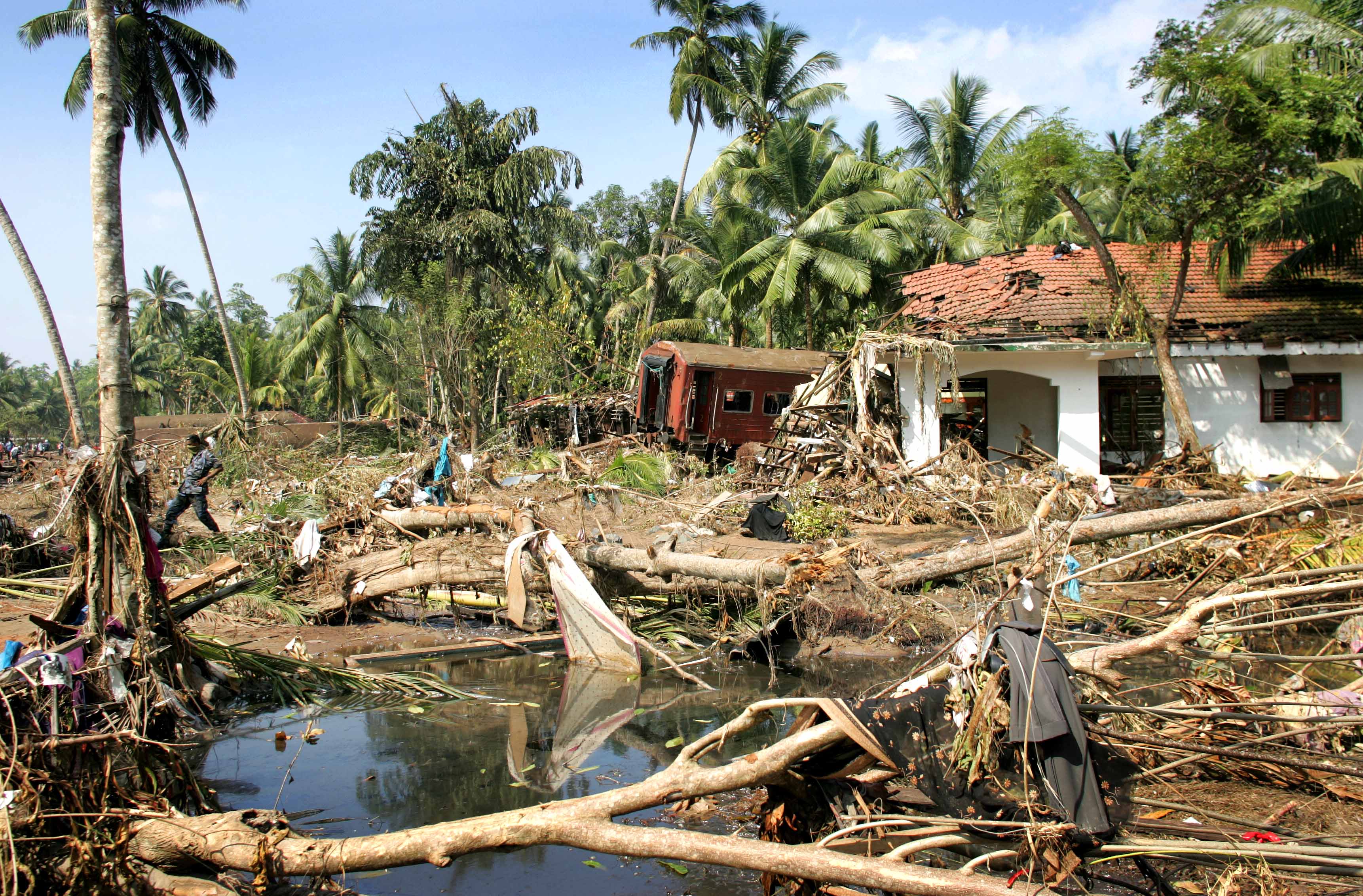
The devastation caused by the Boxing Day tsunami in Peraliya, Sri Lanka
KIERAN DOHERTY KD/ABP
On March 11, 2011, a magnitude-9.0 undersea megathrust earthquake struck off northeast Honshu, Japan, automatically shutting down the reactors at the Fukushima Daiichi nuclear plant. This triggered a crisis that was compounded after a series of tsunamis struck 46 minutes later, disabling the emergency generators which provided power to the emergency cooling systems in the plant.
A huge earthquake struck Chile in 2010 generating 12ft (3.7m) waves that hit French Polynesia and the Chatham Islands in New Zealand. The 8.8-magnitude earthquake damaged 1.5 million houses in Chile, one third of them seriously. Cars were overturned, roads were split by fissures and the country suffered more than 100 aftershocks, many of them stronger than five on the Richter scale.
And the biggest ever: On May 22, 1960, southern Chile was hit by the most powerful earthquake recorded, at a magnitude of 9.5. At least 1,600 people died. As a result, almost every large building constructed in Chile can withstand tremors.
Evacuations ordered in Indonesia
The authorities in Indonesia have announced the evacuation of residents in some of its coastal areas, including in the province of Papua.
Elsewhere, in the Philippines, the authorities have cancelled a tsunami advisory that had been issued for various coastal communities earlier in the day. “Any effects due to minor sea level disturbances have largely passed,” the Philippines Institute of Volcanology and Seismology said in a recent update.
In Guam and Northern Mariana Islands, a tsunami advisory has been cancelled, with locations across Micronesia also declaring the all clear.
Woman dies while evacuating in Japan after car falls off cliff
A 58-year-old woman has died in Japan as she attempted to evacuate a coastal area amid tsunami warnings. She died after her car fell off a 60ft cliff in the city of Kumano, Mie prefecture. It is the only reported fatality from the tsunami in Japan so far.
The woman was taken to hospital in a state of cardiac arrest after suffering a severe head injury. She died three hours later. After receiving the tsunami warning, the woman had sent a message to her family saying: “I’ll leave my car on higher ground. There’s an evacuation area.”
4m waves expected in vulnerable French Polynesian islands
French Polynesia is expecting waves of up to 4 metres, the authorities have said.
Earlier in the day, officials expected the tsunami to hit the islands of Ua Huka, Nuku Hiva and Hiva Oa. Comprising a number of small, low-lying islands in the Pacific, parts of French Polynesia are very vulnerable to tsunamis and rising seas.
‘An earthquake of this size in this area is not a surprise’
Scientists have said the tsunami has its origins in what is known as a megathrust fault. “These are the largest faults on Earth and are capable of generating the largest earthquakes on Earth,” said Dr Rebecca Bell, associate professor in tectonics at Imperial College London.
The shallow parts of megathrust faults are underwater, which means they also pose a significant tsunami risk.
“Megathrusts exist at subduction zones, where a denser oceanic tectonic plate sinks below a less dense overriding tectonic plate,” Bell said. At the location of the most recent earthquake the Pacific plate is sinking below the North American plate.
“Megathrust faults allow earthquake rupture along great lengths and given its size the [8.8-magnitude quake recorded overnight] is likely to have ruptured over a length of 300-400km,” she added.
“The depth is reported by USGS [the United States Geological Survey] to be 20km, which is quite shallow for megathrust earthquakes. The shallow rupture of the fault means the earthquake has more chance of causing the sea bed to move, which can cause a tsunami. An earthquake of this size in this area is not a surprise — in 1952 there was a magnitude-9.0 earthquake close to this latest rupture. This is a subduction zone well known for being able to produce large earthquakes.”
More island nations in Pacific issued with tsunami alerts
Papua New Guinea, the Solomon Islands and Vanuatu have been issued with tsunami alerts by the US National Oceanic and Atmospheric Administration.
A tsunami advisory has also been issued for most coastal areas of British Columbia, on Canada’s west coast.
‘Rapid and damaging surge’ in California
Waves in Crescent City, California, appear to be rising with the latest report recording heights of 3.6ft (1.1m). Just under an hour ago, waves of up to 1.5ft (0.45m) were being observed in Crescent City.
Tsunami waves have also hit San Francisco, Monterey and Port San Luis, where the Los Angeles weather service said there was a “rapid and damaging surge, going from low to high tide in just a few minutes”.
‘Worst part of tsunami’ over in Hawaii
The tsunami threat has been downgraded in Hawaii to an “advisory”, as opposed to a warning.
“Based on all available data a major tsunami is not expected to strike the state of Hawaii,” the Pacific Warning Tsunami Centre has said. There is still the potential for strong waves and flooding, however those who have been evacuated can return home.
The “worst part of it” is over, the centre’s director, Chip McCreery said, according to the Honolulu Star-Advertiser.
The only remaining warning in the US is in northern California.
Waves hit Washington and Oregon
Tsunami waves are now beginning to hit the states of Washington and Oregon on America’s west coast, CNN reports.
The largest waves on the coast have been recorded in California, reaching up to 1.6ft (0.49m) in the state’s Arena Cove.
The country’s National Weather Service has issued a tsunami warning on California’s north coast and tsunami advisories for the rest of state’s coast, including the San Francisco Bay Area, Oregon coast and Washington coast.
Tsunami warning for archipelago in French Polynesia
The authorities in French Polynesia have issued a tsunami warning for the Marquesas Islands archipelago, with waves of 1.1-2.2m expected to hit the islands of Ua Huka, Nuku Hiva and Hiva Oa overnight from Tuesday to Wednesday.
Residents were urged to move to higher ground and follow official instructions, including securing boats or moving them away from the shore.
Other archipelagos in French Polynesia may be affected by waves less than 30cm high, which do not require evacuation or sheltering, the authorities said.
‘It all escalated very quickly’: British tourists recall moment tsunami alarms sounded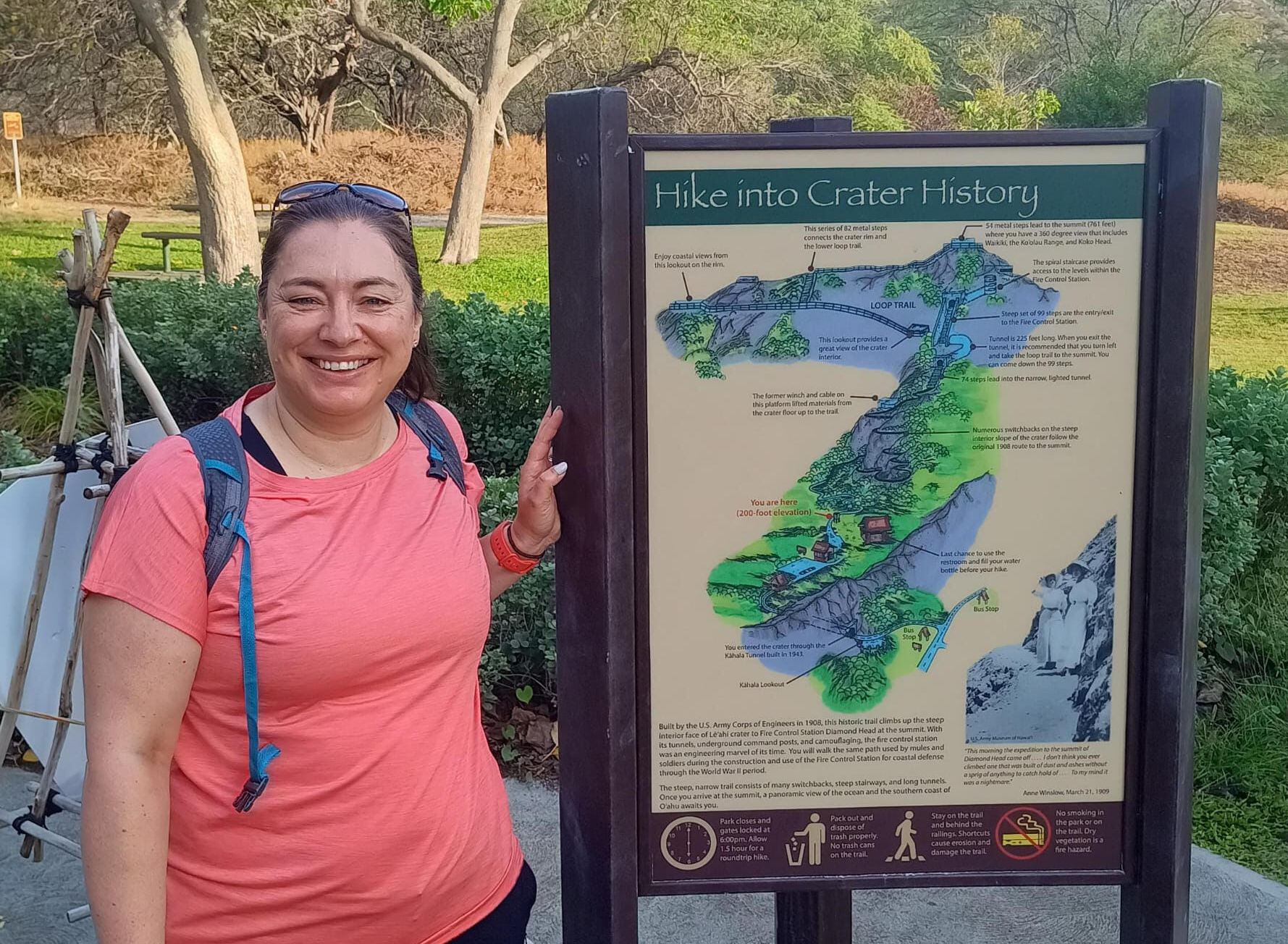
Laura Mansfield is on holiday with her husband in Hawaii
Laura Mansfield, 44, and her husband, David, were on the beach when their phones buzzed with a tsunami warning message — although they initially took little notice.
The pair, from Wokingham, Berkshire, are on holiday in Waikiki. “We heard a few people talk about it on their sun loungers and everyone said the warnings are quite normal around here,” she said.
An hour later, at about 4pm local time, another warning message came through. Instead of “advisory” it was now marked “extreme”, adding “you are in danger, get away from coastal waters”. Then the sirens began to go off.
“We only really started to worry when alarms were sounding. We were opposite a big supermarket and we saw them shut the whole thing down completely … If they are taking it seriously by shutting shops then we need to pay more attention. It all escalated very quickly.”
They returned to their high-rise hotel, which then began to move up anyone staying in rooms lower than the fifth floor. With Mansfield on the 18th floor, she and her husband are staying put and waiting for any announcements which come straight into the room through speakers, installed specifically for such an eventuality.
Tsunami waves hit northern California
Speaking about the first tsunami waves to have hit California, the National Weather Service Eureka confirmed that Crescent City, along with Humboldt, in the northern part of the state, had been impacted.
“Waves will continue to build in through the night and will become more dangerous as we approach high tide,” the service posted on X, adding: “Stay away from beaches!”
Russia declares state of emergency on tsunami-hit islands
The Russian authorities have declared a state of emergency on the Kuril Islands.
Waves topping 3m previously hit Severo-Kurilsk, the main city on the islands, flooding its fishing port and cutting off power supplies to the area.
Japan asserts territorial rights over the four southernmost islands, which it calls the Northern Territories. They were taken by the Soviet Union in the final days of the Second World War, and the dispute has kept the countries from signing a peace treaty.
Lessons from 2011 quake ‘have guided Japan’s response’
Japan has learnt its lesson from past earthquakes, Kazuto Suzuki, professor of science policy at the University of Tokyo, has said, with good early warning infrastructure and well prepared residents helping to avoid casualties so far.
Suzuki recalled an earthquake in 2011, which killed more than 18,000 people in Japan. He told Sky News: “We had a very serious reminder of the importance of evacuating early. It seems there were no injuries, no casualties, so far I think the early warning system has worked very well.”
First tsunami waves seen in California
California has started to see its first tsunami waves, according to CNN, with elevated water levels witnessed in Crescent City, in the northern part of the state.
So far, waves of one foot have been observed, but more are expected soon.
The city is located along a 100-mile stretch of northern California’s coast that is under a tsunami warning, the highest alert level — while the rest of America’s west coast is under a tsunami advisory.
Oprah opens private road in Maui to aid evacuees
Oprah Winfrey has opened her private road in Maui, Hawaii, after calls for it to be opened to help those evacuating after tsunami alerts were issued.
“As soon as we heard the tsunami warnings, we contacted local law enforcement and FEMA [the Federal Emergency Management Agency] to ensure the road was opened,” Winfrey’s spokesman told CNN.
“Local law enforcement [is] currently on site helping residents through 50 cars at a time to ensure everyone’s safety. The road will remain open as long as necessary.”
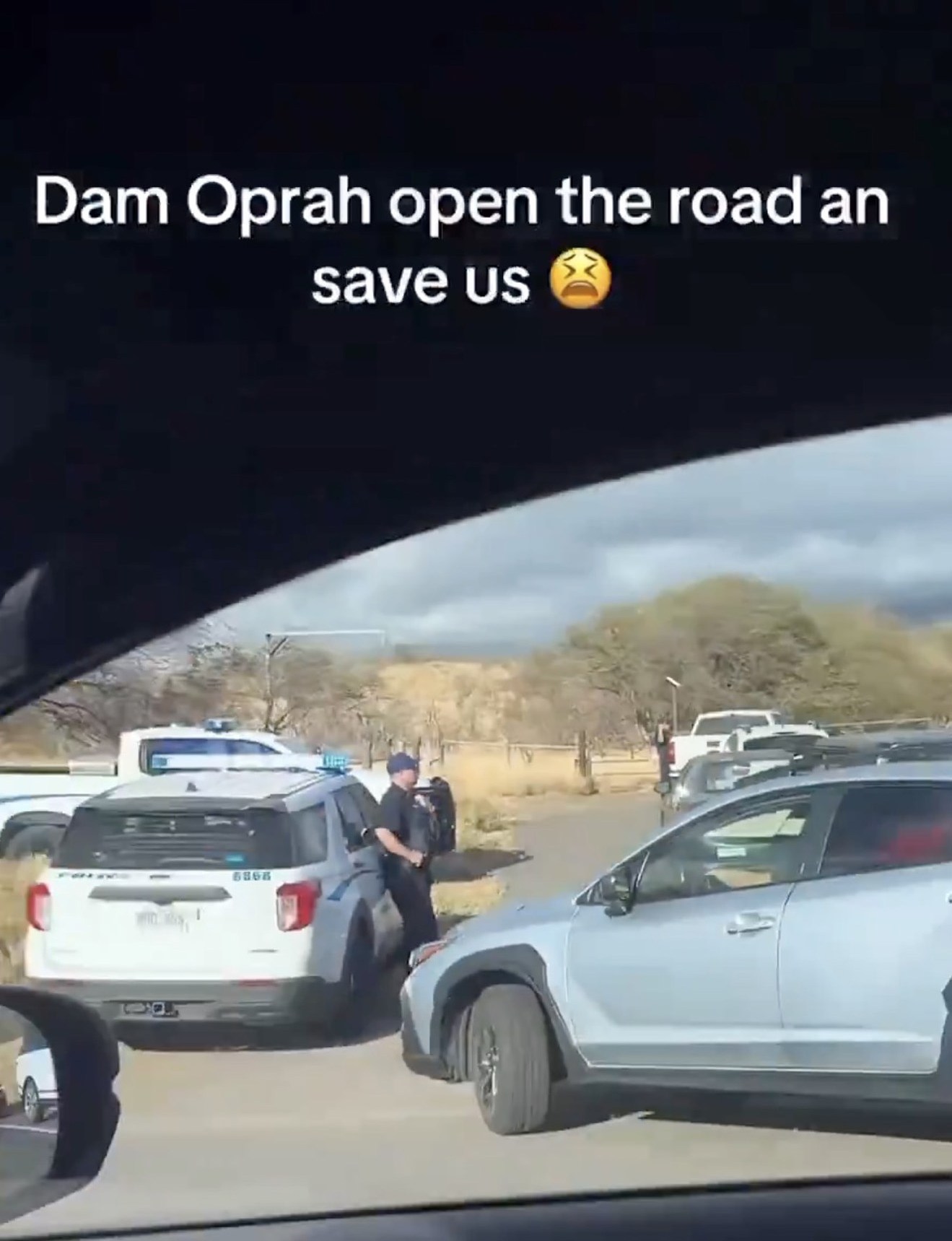
Posts on social media had accused Oprah Winfrey of refusing to open the road
RUCKAS
Japanese also facing 40C temperatures
Japanese residents in tsunami-affected areas will not be able to return to their houses until the end of the day on Wednesday, the country’s chief cabinet secretary, Yoshimasa Hayashi, has said.
Hayashi added that waves could remain high for at least one day, and urged evacuees to take precautions and stay well hydrated in the summer heat.
As well as bracing for the tsunami, Japan sweltered in a new record temperature of 41.2C, with the mercury also hitting 40C in the ancient capital of Kyoto for the first time since observations began.
Residents of South Pacific islands told to stay away from the coast
Authorities in a number of island nations in the South Pacific Ocean have urged people to stay away from coastlines, familiarise themselves with evacuation routes and await further guidance from officials, but did not order evacuations.
Warnings to stay away from beaches were issued by officials in Fiji, Samoa, Tonga, Federated States of Micronesia and Solomon Islands.
Some very small, low-lying Pacific island chains are among the world’s most imperilled by tsunamis and rising seas.
Whales wash ashore in Russia and Japan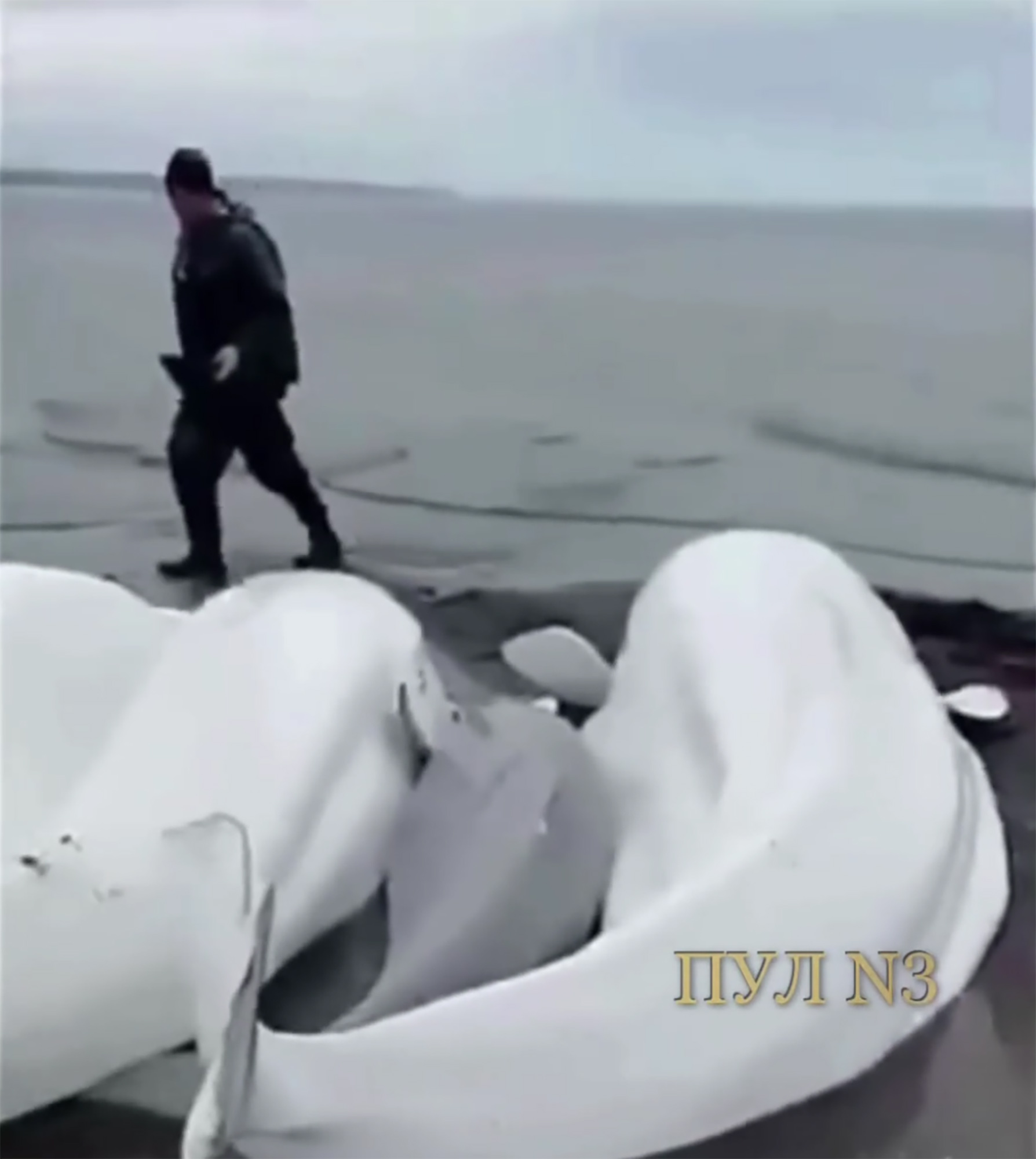
Beluga whales in Russia’s Kamchatka Peninsula
EAST2WEST
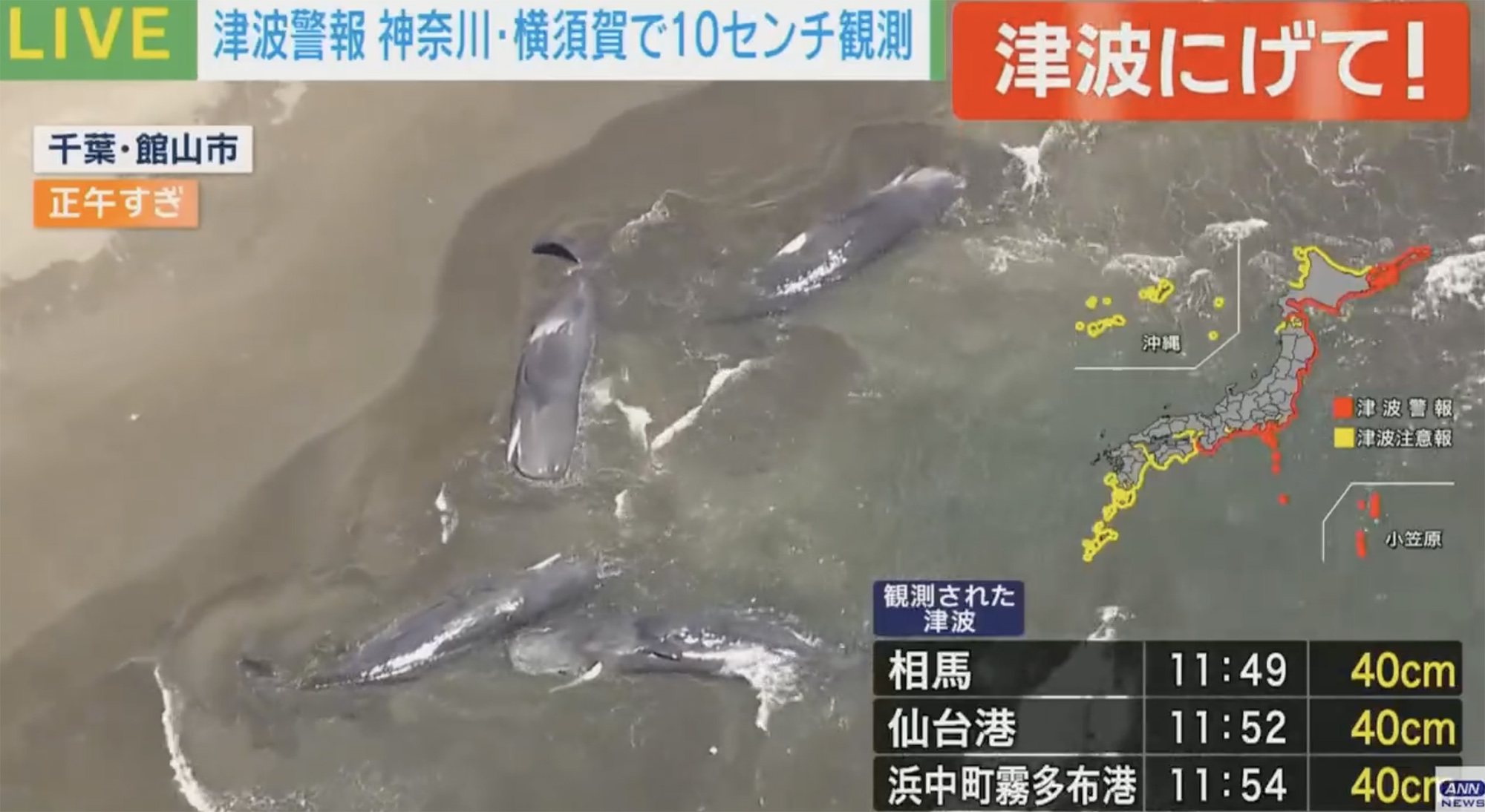
Whales on Japan’s coast
EAST2WEST
Images show damage caused by quake in Russia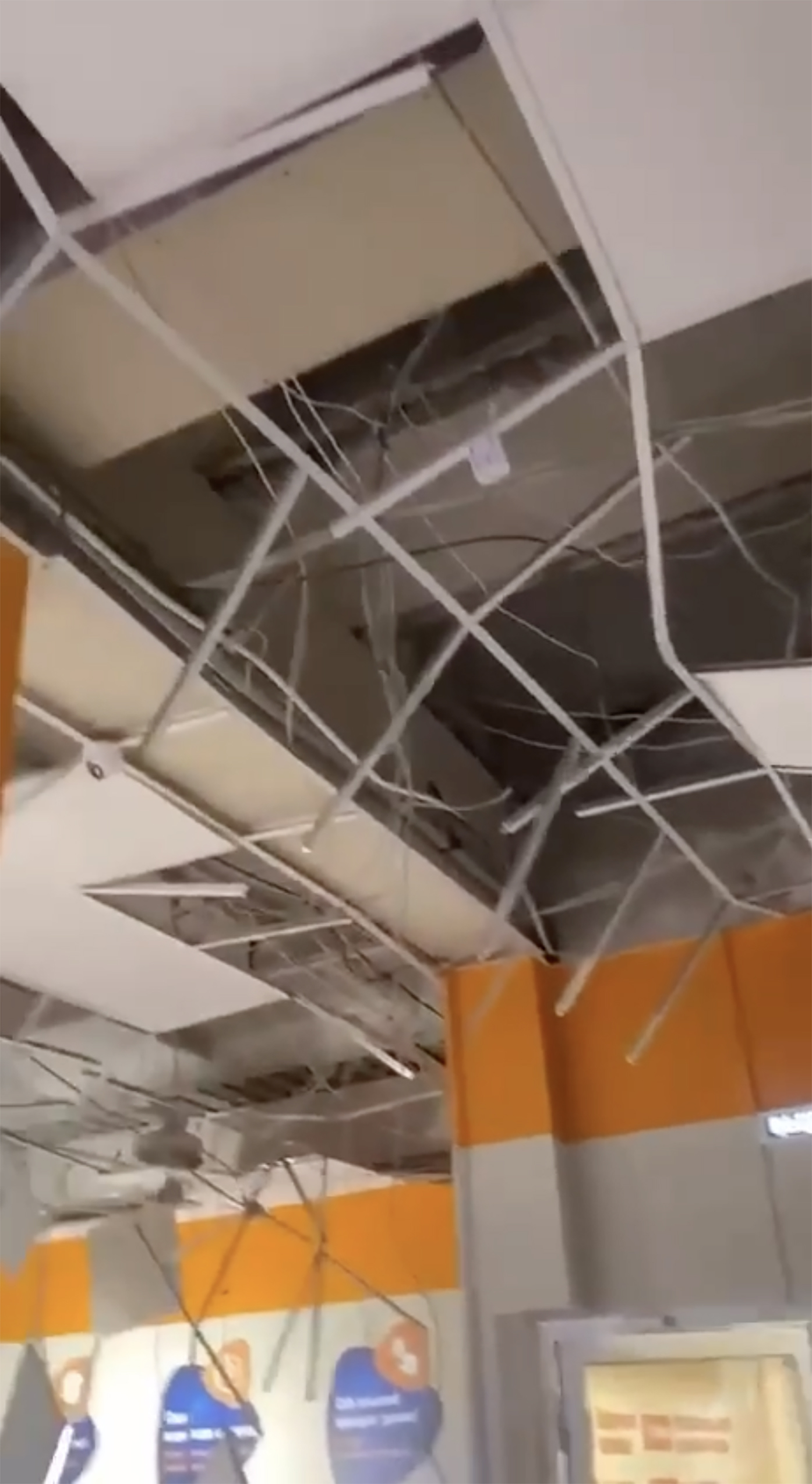
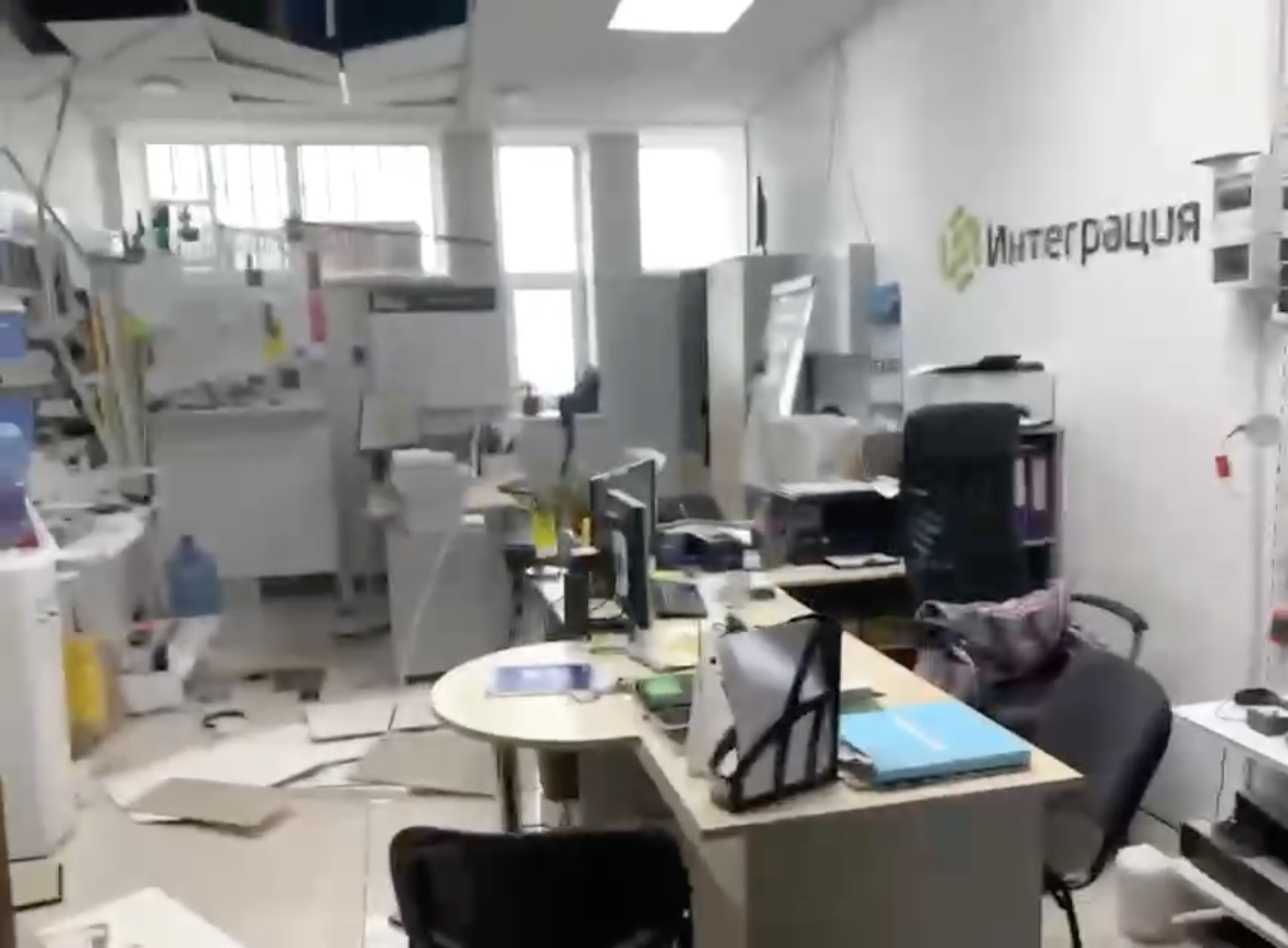
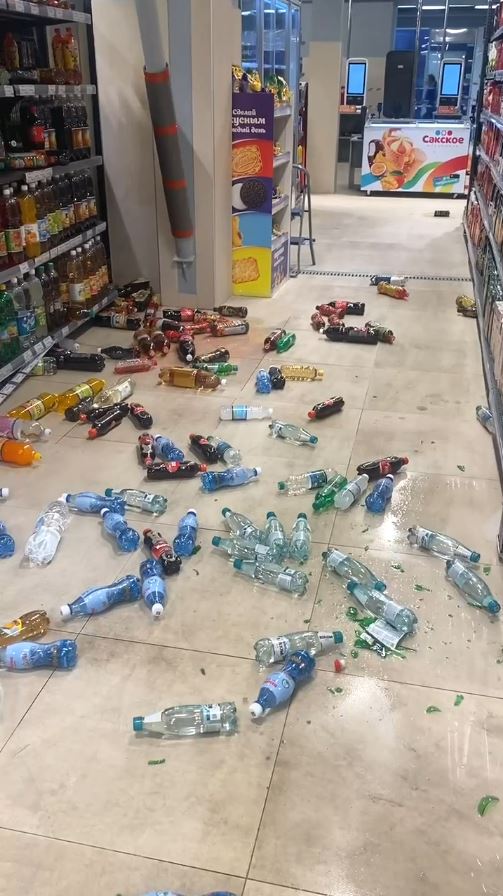
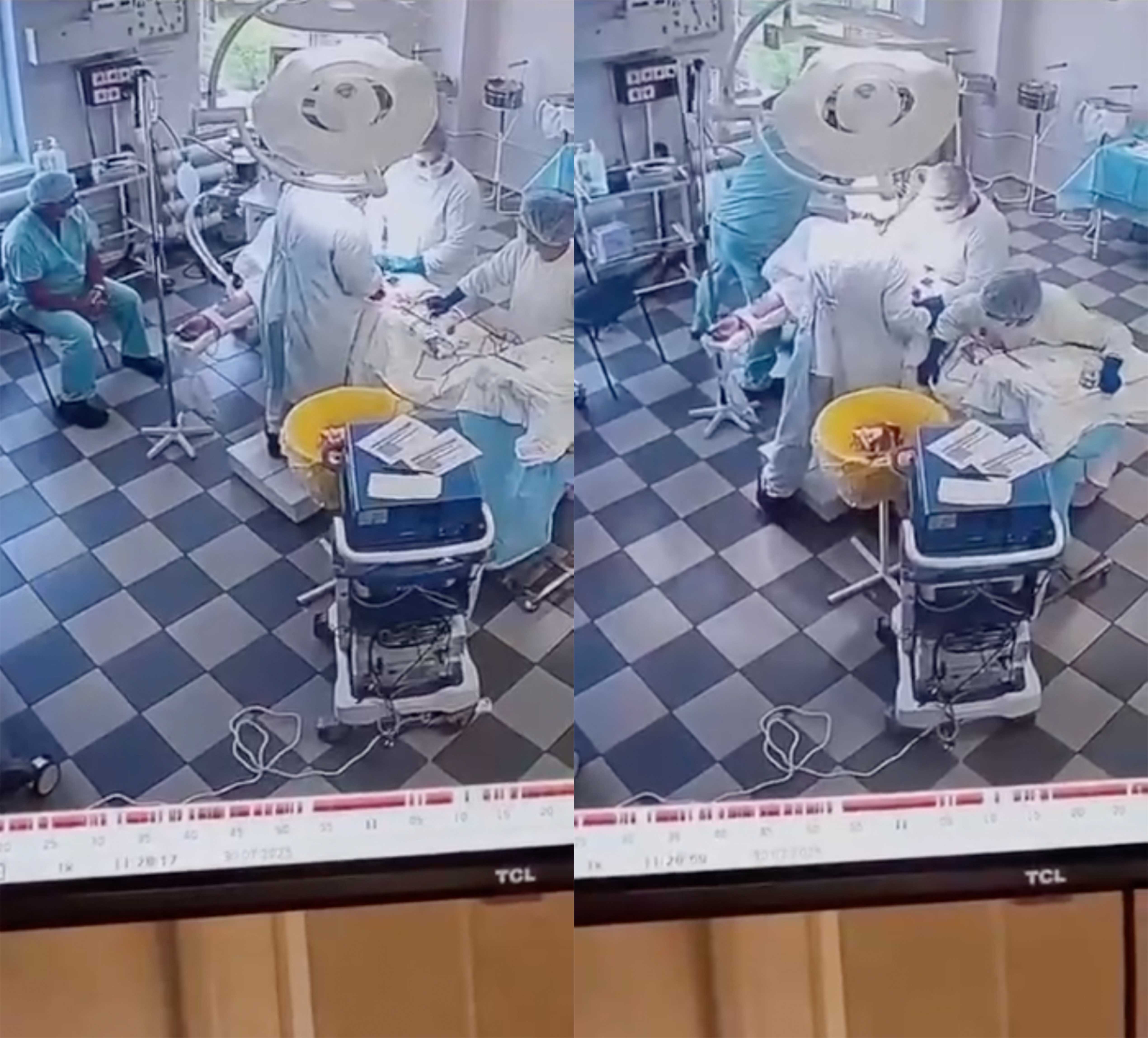
Doctors continued with surgery in the Kamchatka Peninsula despite the powerful earthquake
EAST2WEST
Hawaii residents warned ‘follow-up’ waves after often larger
Hawaii’s County Civil Defence Agency has warned residents that the tsunami is “not over yet” after a cautiously optimistic press conference led by its governor, Josh Green.
Posting on X, the agency said: “Initial wave impacts from the leading edge of the tsunami measured several feet at some monitoring stations, but ‘follow-up’ waves over the next several hours often are LARGER. Don’t return to evacuated areas until the tsunami warning is officially lifted.”
Several hours until worst of tsunami passes, Hawaii governor says
Coastal water is receding by 20-30ft (6-9m) at Haleiwa Harbor on Oahu, Hawaii’s most populous island, the state’s governor Josh Green said in a recent press conference.
Boats were left to lie on dry rock and sand. “That gave us pause,” Green said.
Oahu Emergency Management have posted on X: “Tsunami waves are currently impacting Hawaii. Take Action NOW!”
So far no damage has been recorded on the island, but it will take several hours until the worst of the tsunami has passed, the governor said.
Video shows the moment quake struck Russia’s Kamchatka Peninsula Almost 2m told to evacuate in Japan
Almost 2m told to evacuate in Japan
Close to 2 million people are under evacuation advisories in Japan, under the orders of the country’s Fire and Disaster Management Agency.
The evacuation orders were issued across some 220 municipalities along Japan’s Pacific coast.
One woman in her sixties was slightly injured and taken to hospital on the northern island of Hokkaido after she fell while rushing to evacuate.
Hawaii yet to be struck by a ‘wave of consequence’
Waves of 4ft (1.2m) have now been recorded off the coast of Oahu, an island part of Hawaii.
So far, however, there has not been a “wave of consequence” to hit the state, Josh Green, the governor of Hawaii, has said.
Green added that it would be several hours until authorities would be able to give the “all clear”
He continued: “We still have not seen any wave activity come past the Big Island. That’s important. Until we see what happens on the Big Island, we won’t feel we’re in a position to start saying that we’re in the clear.”
He asked residents to “lay low tonight and watch TV, please”.
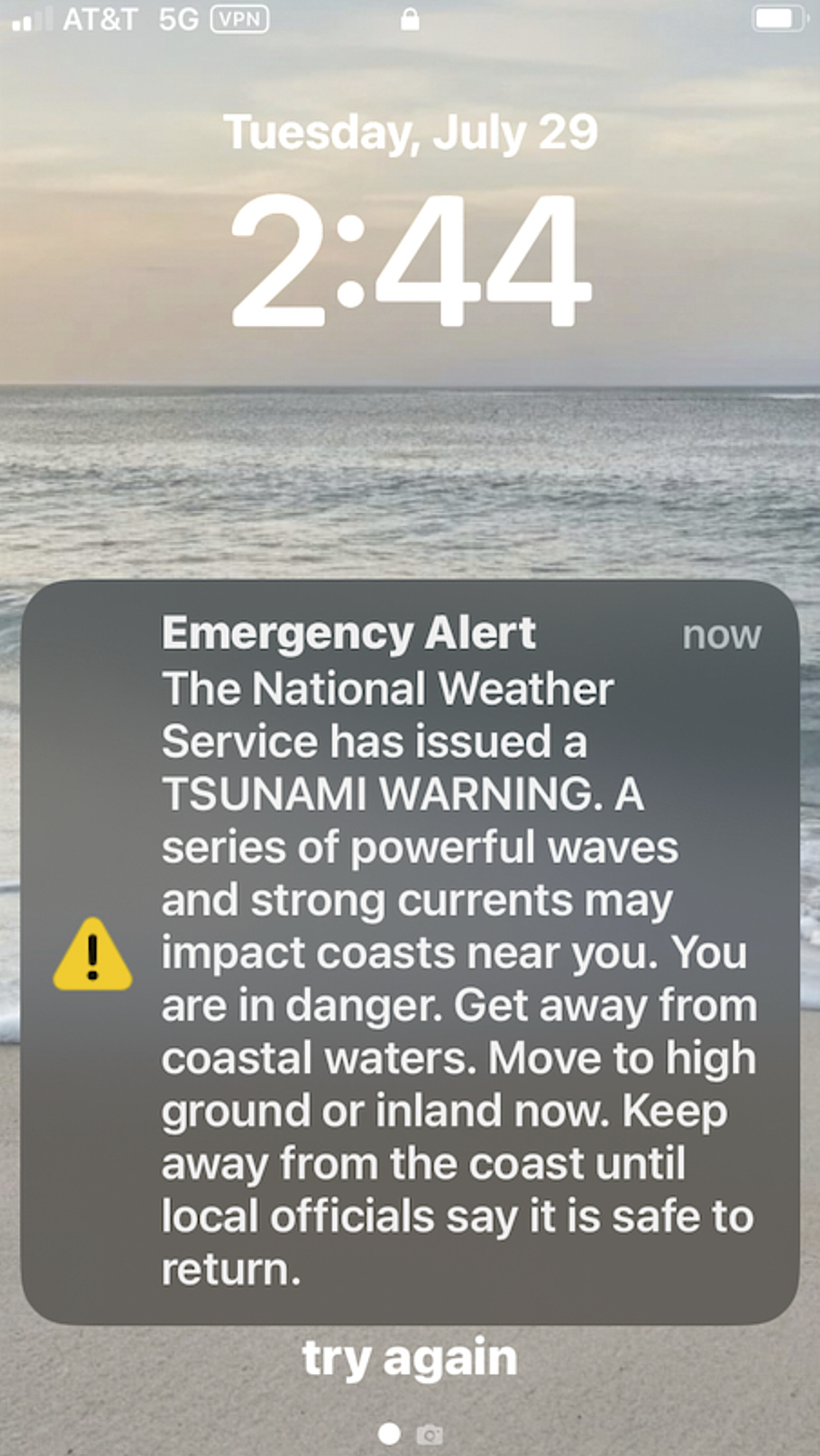
A tsunami alert in Honolulu, Hawaii
ENNIFER SINCO KELLEHER/AP
New Zealand braces for strong currents and surges
Strong currents and unpredictable surges can be expected in coastal areas around New Zealand after the earthquake off Russia, New Zealand’s National Emergency Management Agency (Nema) says.
All coastal areas around New Zealand are covered by the warning. The surges are expected to reach New Zealand about midnight, local time (1pm BST).
Nema says strong currents and surges can injure and drown people. They are warning people in or near the sea to move out of the water, off beaches and away from harbours, marinas, rivers and estuaries
“People on boats, live-aboards and at marinas should leave their boats/vessels and move onto shore,” Nema said. “Do not return to boats unless instructed by officials.There is no need to evacuate other areas unless directly advised by local civil defence authorities.”
Tsunami ‘now impacting Hawaii’
Tsunami waves are “now impacting Hawaii”, the Pacific Tsunami Warning Center has said in an update.
“Urgent action should be taken to protect lives and property,” the update read, adding that the warning may be in force for several hours.
Tsunami waves ‘exceed 3m’ near Russian town
Tsunami waves near the Russian Pacific town of Severo-Kurilsk have exceeded three metres in height, Russian news agency RIA Novosti reports.
Japan has recorded a 1.3 metre tsunami, according to the local broadcaster NHK.
1.8m wave passes island between Japan and Hawaii
A wave measuring 6ft tall (1.8m) has been recorded going through the Midway Atoll island between Japan and Hawaii, the governor of Hawaii has said.
“We’re still expecting a significant wave,” he said, adding that the authorities would only give the all clear when they feel there is “total safety”.
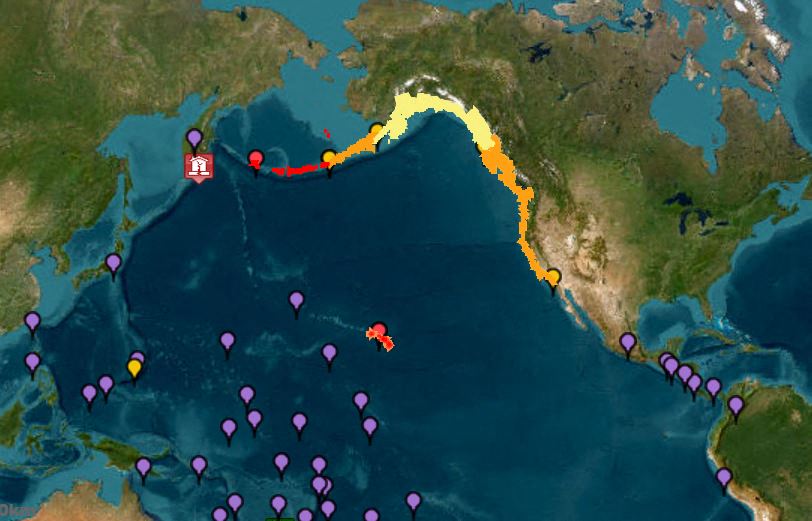
The earthquake off the Russian coast has caused a tsunami that threatens multiple countries
NOAA/AFP/GETTY IMAGES
Evacuation orders have been issued in Japan and Hawaii, and Californian residents have been told to stay away from the coast.
China, the Philippines, Indonesia, New Zealand and Mexico have also issued alerts.
Earthquake damages power grid
A power grid has been damaged in Sakhalin after the earthquake off the Russian coast, and electricity has been shut off, the regional governor said.
Tsunami waves reaching 3-4 metres struck parts of Kamchatka Peninsula — partially flooding the port and a fish processing plant in the town of Severo-Kurilsk and sweeping vessels from their moorings, Russia’s emergency ministry said.
“Today’s earthquake was serious and the strongest in decades of tremors,” Vladimir Solodov, the governor of the region, said in a video posted on the Telegram messaging app.
Russia’s Ministry for Emergency Services said on Telegram that a nursery was damaged but most buildings withstood the quake. No serious injuries or fatalities have been reported.
People ordered to leave beaches in Japan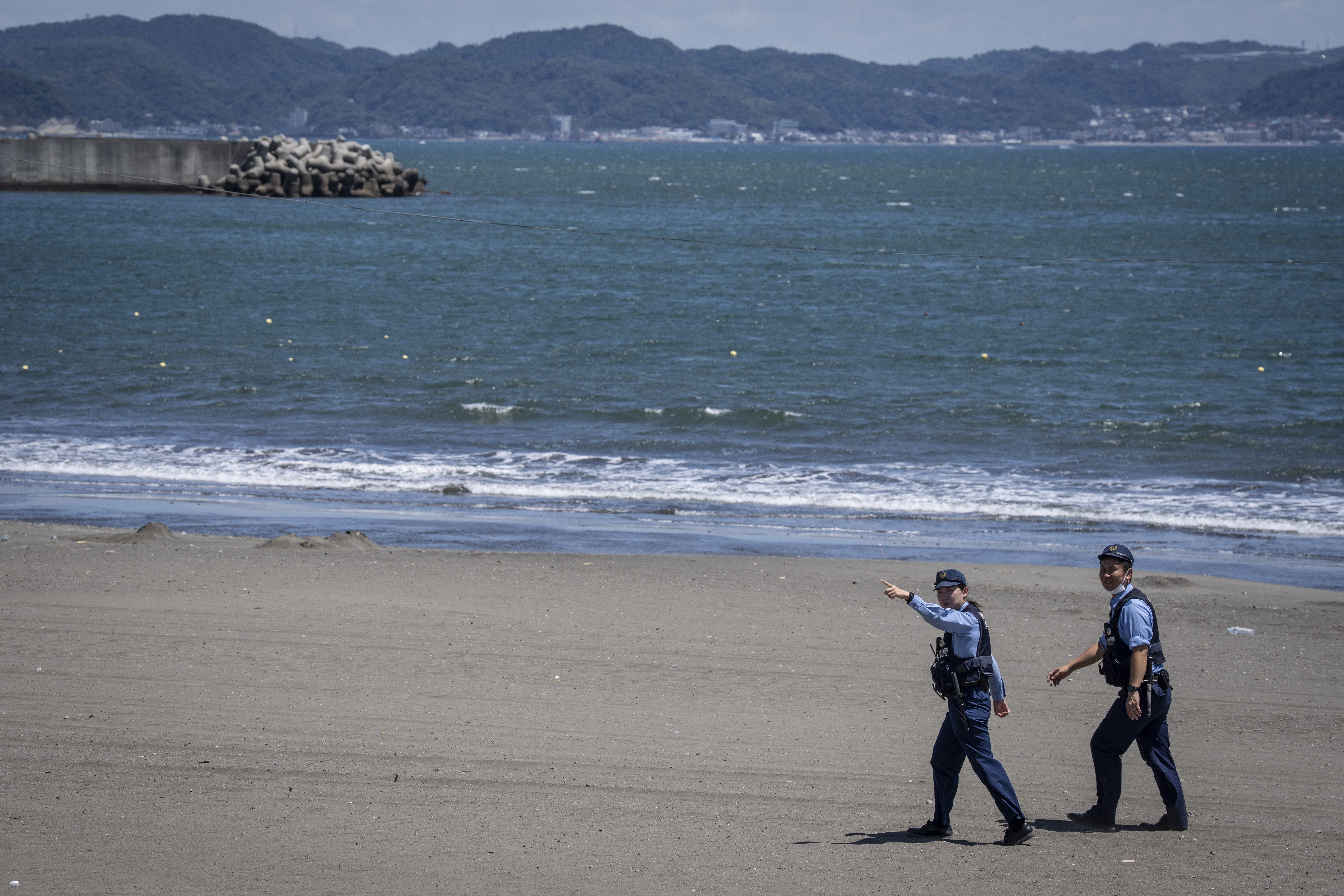
Police officers ask people to evacuate in Fujisawa city, Kanagawa prefecture
YUICHI YAMAZAKI/AFP/GETTY IMAGES
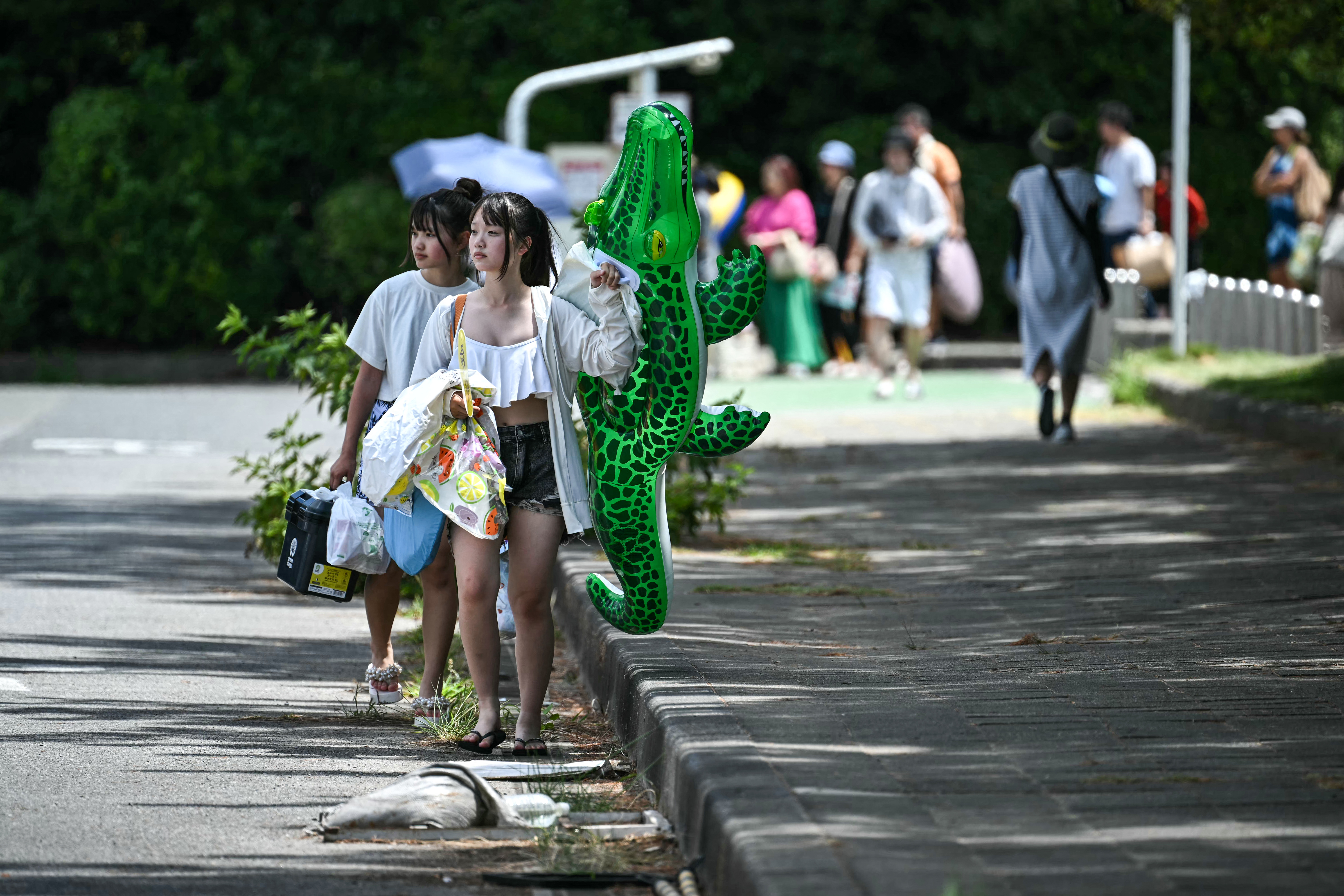
People leave the beach at Inage Seaside Park, Tokyo Bay, after tsunami warnings
PHILIP FONG/AFP/GETTY IMAGES
Several people were injured in the remote Russian region where an earthquake and tsunami struck, while much of Japan’s eastern seaboard — devastated by a powerful earthquake and tsunami in 2011 — was ordered to evacuate.
“Today’s earthquake was serious and the strongest in decades of tremors,” Vladimir Solodov, the governor of Kamchatka, said in a video posted on the Telegram messaging app.
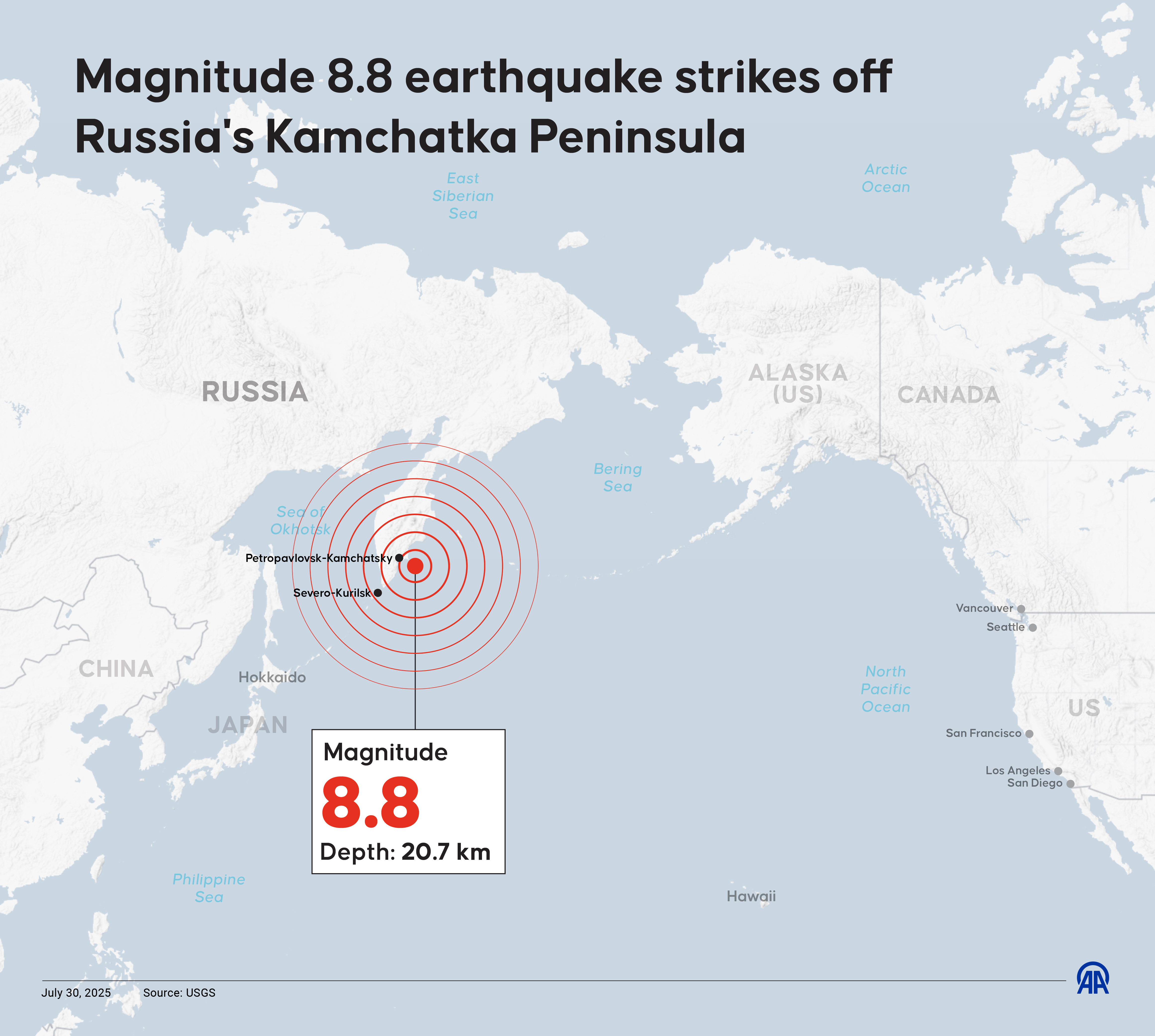
MEHMET YAREN BOZGUN/ANADOLU VIA GETTY IMAGES
A tsunami with a height of 3-4 metres (10-13 feet) was recorded in parts of Kamchatka, said Sergei Lebedev, the regional minister for emergency situations, who urged people to move away from the shoreline.
The US Geological Survey said the earthquake was shallow at a depth of 19.3 km (12 miles), and was centred 119 km (74 miles) east-southeast of Petropavlovsk-Kamchatsky — a city of 165,000. It revised the magnitude up from 8.0 earlier, and reported a strong aftershock of magnitude 6.9 soon after.
Get to high ground, Hawaiians told
In Hawaii, coastal residents were told to get to high ground or the fourth floor or above of buildings, and the US coastguard ordered ships out of harbours as the tsunami approached.
“Take action! Destructive tsunami waves expected,” the Honolulu Department of Emergency Management said on X.
Footage on Japanese public broadcaster NHK showed scores of people in the northern island of Hokkaido on the roof of a building and sheltering under tents from the beating sun, as fishing boats left harbours to avoid potential damage from the incoming waves.
Nissan Motor suspended operations at certain domestic factories in Japan to ensure employee safety, Kyodo news agency reported.
Please enable cookies and other technologies to view this content. You can update your cookies preferences any time using privacy manager.
Enable cookiesAllow cookies once‘It felt like the walls could collapse any moment’
A resident in Petropavlovsk-Kamchatsky said the shaking started slowly but built up and rumbled for several minutes.
“Considering its strength and how long it lasted I decided to leave the building,” Yaroslav, 25, told Reuters.
“The building is very flimsy and light, which might be why it survived. But it felt like the walls could collapse any moment. The shaking lasted continuously for at least three minutes.
Several people sought medical assistance after the quake, Oleg Melnikov, regional health minister, told Russias TASS state news agency.
Workers evacuate Japan’s Fukushima nuclear plant
Japanese news broadcasters have an evacuation warning for the tsunami
RICHARD LLOYD PARRY
Large coastal areas of Japan, as well as Hawaii, are braced for tsunamis.
In a nationally televised broadcast, the prime minister, Shigeru Ishiba, called on residents of the country’s Pacific coast — from Hokkaido in the north to Wakayama in central Japan — to evacuate to high ground after the earthquake off the Kamchatka Peninsula in eastern Siberia at 8.25am Japan time.
“Tsunamis can strike repeatedly over a long period of time,” the Japan Meteorological Agency warned. “The waves that come after the first one may be larger, so it is important to continue evacuating until the tsunami warning or advisory is lifted.”
The agency warned that tsunamis as high as three metres could strike coastal areas, but so far the highest water has been 40cm in Iwate Prefecture. No significant damage or injuries have been reported. The earthquake itself, which has caused damage to buildings in Kamchatka, was not felt in Japan.
Iwate is the same stretch of coast where a tsunami killed more than 18,500 people in 2011. Some 4,000 workers Fukushima Daiichi nuclear power station, which melted down after the 2011 disaster, were taking shelter at higher ground, the plant’s operator said.
Californian residents warned not to head to the coast
President Trump said in a social media post: “Due to a massive earthquake that occurred in the Pacific Ocean, a tsunami warning is in effect for those living in Hawaii.
“A tsunami watch is in effect for Alaska and the Pacific Coast of the United States. Japan is also in the way. Please visit tsunami.gov/ for the latest information. STAY STRONG AND STAY SAFE!”
In California, residents were warned not to head to the coast to watch the waves as they began to arrive.
San Francisco was expected to see waves from around midnight, while further south in Los Angeles any tsunami was expected at about 1am.
Karen Bass, the mayor of Los Angeles, urged residents to sign up for updates, as advice said: “If you are located in the coastal area, move off the beach & out of harbors & marinas. Do not go to the coast to watch.”
Please enable cookies and other technologies to view this content. You can update your cookies preferences any time using privacy manager.
Enable cookiesAllow cookies once‘Urgent action’ for Hawaiian residents
The Pacific Tsunami Warning Center said waves could inflict damage along the coastlines of all the Hawaiian islands.
“Urgent action should be taken to protect lives and property,” the agency said. The first waves were expected about 7pm Tuesday local time (6am BST).

Queues of traffic as people try to leave Ala Way Harbor in Waikiki, Oahu as Hawaiians are told to get to safety
EUGENE TANNER/AFP/GETTY IMAGES
Warning sirens blared in Honolulu as people moved to higher ground. The danger is acute in Hawaii as the waves can wrap around the islands.
“The danger can continue for many hours after the initial wave as subsequent waves arrive. Tsunami heights cannot be predicted and the first wave may not be the largest,” the National Weather Service said in an alert.


AloJapan.com